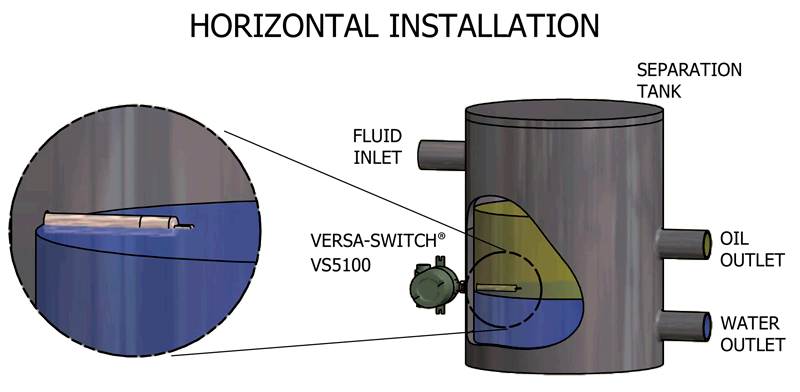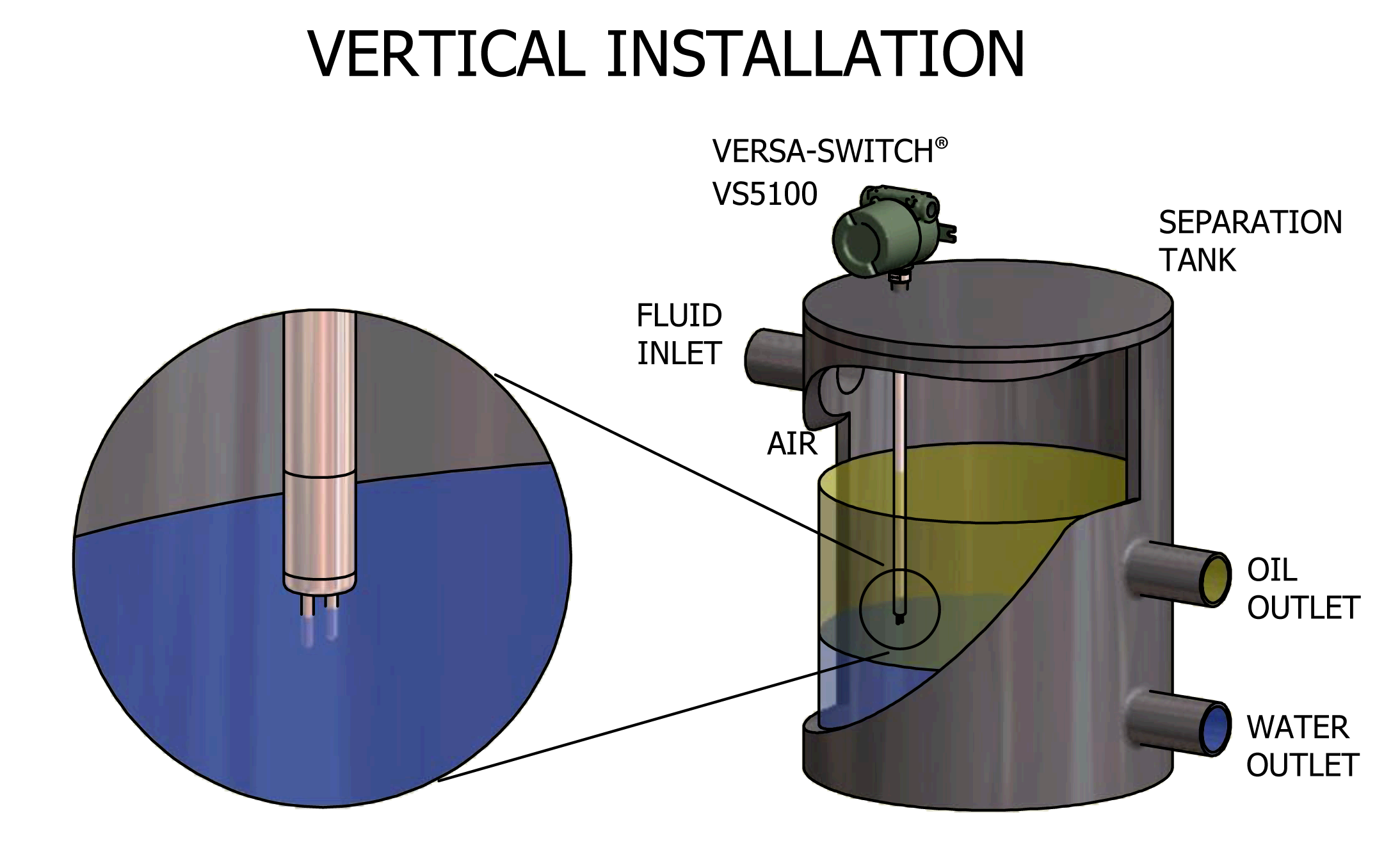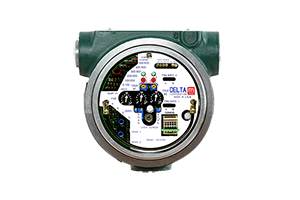Interface Level Detection Switch
Applications:
Oil/Water Interface
Gasoline/Water Interface
Three Phase-Air/Hydrocarbon/Water Interface
Application Background:
Separation Tanks are common in industrial situations where mixtures of water and hydrocarbon products are produced by the process. Pumping oil from the ground and pumping gas from the ground using “fracking” fluids both produced mixtures of hydrocarbon and water that must be separated.
Separation Tanks allow the water to settle to the bottom of the tank while the oil or other hydrocarbon product surface to the top. The valuable hydrocarbon product is drained through a valve located on the tank above the water level. The dump water is drained through a valve below the water level. This is a continuous, ongoing process.
The key is to monitor the interface between the hydrocarbon and water to ensure that the separation is well defined and mixtures are not allowed to be discharged through the wrong discharge valves.
Application Solutions:
There are many interface switch technologies including: manual sticking, manual sampling, sight glass, conductivity probes, floats, capacitance probes, etc. All have proven to work with varying degrees of success. Some rely on operator’s attention and memory. Some have mechanical parts and prone to wear and failure. Still other electronic type probes require conducting fluids or fluids with different capacitance.
A better solution for the interface detection is the Thermal Differential Switch. The TD Switch has two thermal sensing devices (RTD’s) encased in stainless steel tips. One sensor detects the temperature of the fluid while the second has a very small current applied to create a thermal differential above the fluid temperature. The differential temperature between water and a hydrocarbon is different. Therefore detection of the interface is achieved reliably, with excellent repeatability.
With a single process connection into the separation tank either through the side (horizontally) or through the top (vertically) a TD probe is strategically located to optimize the interface point between the two fluids (ex. Oil and water). With the dual channel VersaSwitch product from Delta M Corporation it is easy calibrate one switch channel for the hydrocarbon and the second switch channel for water. Separate relays activate depending upon with the sensor probe is covered by water or by the hydrocarbon.


with the VS5100 model*
For full details see Section 4.4.4 of the VS5100 manual
for Three Phase (Dual Interface) Calibration
Recommended Products:

Water Detection in Fuel Tanks - Tank Liquid Agitation
Interface Detection
- User Selectable Power – 110/220VAC/24VDC
- Optional Remote Electronics for easy setup
- Wide operating temperature range up to 850F
- 2nd Channel for Detection of: 3 Phase Interface,
Agitation, Temperature or Unit Diagnostics - Two year workmanship warranty




